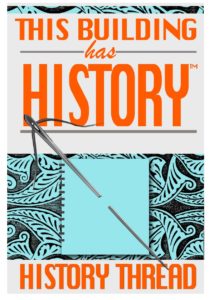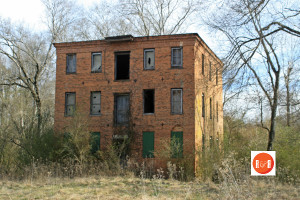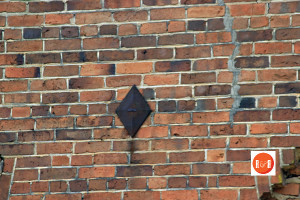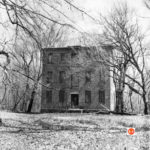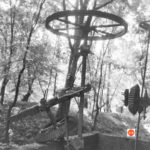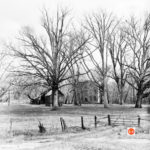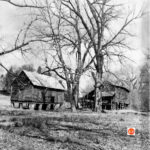Calhoun Mill Road – Along the Varina Davis Trail
City Directories and History: (Rogers Mill) Calhoun Mill is a mid-nineteenth century brick building which possesses a high degree of architectural quality, representing a unique and fine example of mill construction. The mill is significant for its brick construction and for its size, containing three full stories and a basement. The usual manner of grist mill construction produced buildings similar to barns which contained no ornamentation and were almost always built of wood. Mills built of brick and stone are rare in all sections of the country; even more unique is the presence of a hipped roof. Decorative elements include a brick water table, small projecting hood on the third-story facade, corbelled brick cornice, and original nine-over-nine and six-over-nine window sashes. While the present building was constructed ca. 1860, the property included in the nomination has been associated with a mill operation since the 1770s. The mill building, together with six outbuildings (associated sheds and a cotton gin), a race, and a mill dam, are also significant for their impact on the economical, social, and cultural development of this area, which was known by the name of Calhoun’s Mills for many
years. Calhoun Mill served as a commercial center for the Mount Carmel area, providing employment and services, and supporting a thriving community of other businesses nearby. The ca. 1860 mill was used for grinding corn, wheat, and other grains. The site served as a popular place for political rallies and social gatherings well into the twentieth century, according to local residents. A post office was located at the mill between 1822 and 1894. Listed in the National Register November 24, 1980. [Courtesy of the S.C. Dept. of Archives and History]

Bullock, W. P, and Paul L Grier. Official topographical map of Abbeville Co., South Carolina. [S.l.: P.L. Grier, 1894, 1895] Map. Retrieved from the Library of Congress
Additional information: Although the present building was constructed ca. 1860, milling operations were established on this site in the 1770s. Reverend William Tennent crossed the Little River at a place known as Hutchinson’s Mills on September 3, 1775. An article in the Abfrey.il 1e_ Press and Banner on May 31, 1876s stated Hutchinson’s Mills later became known by the name of Calhoun’s Mills. The first specific mention of Calhoun ownership is found in the will of Colonel Joseph Calhoun, a prominent politician, in 1817 when he bequeathed the property to his son Captain Joseph Calhoun. Calhoun’s Mill is also noted on the Mills Atlas of the Abbeville District in 1825. Ownership of the mill left the Calhoun family and was assumed by Dionysius M. Rogers sometime after 1838, when Captain Joseph Calhoun died intestate. In 1852 the Due West Telescope reported the loss by fire of Roger’s Mills (formerly Calhoun’s Mills) for a total loss of $12,000. The mill is noted in the Industrial Census of 1860 as Rogers and Calhoun Mills. Under the entry is the notation “commenced operation March 27.” The 1870 Industrial Census lists the mill solely as Roger’s Mill. The mill left Rogers ownership in 1876, and was sold again in 1883, 1901 and 1915. According to local tradition, the wooden dam at the mill was replaced by the present concrete dam at this time. In 1925 the mill became the property of Darrell J. McAllister. The mill gradually ceased operation; the roller mill closed in 1936, the grist mill in 1950, and the cotton gin in 1954. John A. McAllister obtained full possession of the land and mill in 1967 and is the present owner. (NR File Data / SC Dept. of Archives and History)
Stay Connected
Explore history, houses, and stories across S.C. Your membership provides you with updates on regional topics, information on historic research, preservation, and monthly feature articles. But remember R&R wants to hear from you and assist in preserving your own family genealogy and memorabilia.
Visit the Southern Queries – Forum to receive assistance in answering questions, discuss genealogy, and enjoy exploring preservation topics with other members. Also listed are several history and genealogical researchers for hire.
User comments welcome — post at the bottom of this page.
Please enjoy this structure and all those listed in Roots and Recall. But remember each is private property. So view them from a distance or from a public area such as the sidewalk or public road.
Do you have information to share and preserve? Family, school, church, or other older photos and stories are welcome. Send them digitally through the “Share Your Story” link, so they too might be posted on Roots and Recall.
Thanks!
IMAGE GALLERY via photographer Bill Segars & R&R – 2015
Additional images courtesy of the Blythe Collection – 1982
